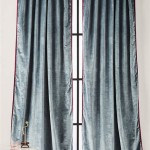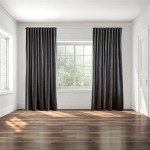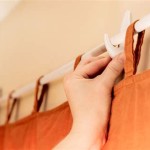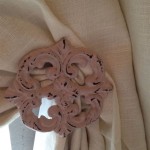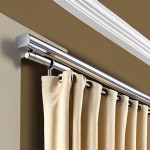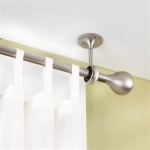How to Use a Curtain Tie Back
Curtain tie backs offer a versatile solution for enhancing the aesthetic appeal and functionality of your window treatments. They provide a means to hold the curtains in place, creating a variety of styles and allowing for greater control over light and privacy. This guide offers a comprehensive overview of how to use a curtain tie back, emphasizing proper techniques and considerations for achieving the desired look.
Choosing the Right Tie Back
The selection of a curtain tie back is a crucial first step. The ideal tie back should complement the style of your curtains and the overall decor of the room. Several factors influence this choice, including:
Material: Tie backs are available in various materials, such as metal, wood, fabric, or rope. Consider the overall aesthetic of your space and the weight of your curtains when selecting the material. For instance, heavier curtains might require stronger tie backs, such as those made of metal or sturdy wood.
Style: Tie backs come in a variety of styles, including simple loops, decorative hooks, or elaborate tassels. Choose a style that aligns with the overall design of your curtains and the room's ambiance. For example, a modern room might call for sleek, minimalist tie backs, while a traditional space might embrace ornate, decorative options.
Color: The color of the tie back should complement the curtains and other decor elements. A neutral color option, such as black, white, or brown, typically works well with most curtain styles. However, consider using bolder colors to create a statement or highlight specific design elements.
Proper Placement and Positioning
Once you have chosen the appropriate tie backs, their placement and positioning are crucial for achieving the desired look.
Height: The height at which you place the tie back influences the overall aesthetic. For a casual, relaxed look, position the tie back lower, closer to the bottom of the curtain. To create a more formal or dramatic effect, place the tie back higher, closer to the top of the curtain. Generally, placing the tie back at approximately two-thirds of the way up the curtain creates a balanced look.
Symmetry: For symmetrical windows, ensure that both tie backs are placed at the same height. This creates a balanced and cohesive look. However, if you have asymmetrical windows or prefer a more asymmetrical design, you can consider placing the tie backs at different heights.
Tension: The tension of the tie back can also affect the final look. If you want a loose, casual effect, use a lighter tension. To create a more structured and formal look, use a tighter tension. Experiment with different tensions to find the look you prefer.
Creating Different Styles
Curtain tie backs offer a wide range of possibilities for creating different styles and looks. Here are a few common styles:
Classic: This style involves simply tying the tie back around the curtain and securing it in place. It creates a clean, understated look.
Draped: This style involves draping the fabric of the curtain over the tie back, creating a flowing, elegant look. It is often used with heavier curtains and more formal settings.
Knotted: This style involves tying the curtain fabric into a knot or bow using the tie back. It adds a touch of whimsy and texture.
Layered: This style involves using multiple tie backs to create layers of drapery. It adds depth and dimension to the look of your curtains.

8 Diffe Ways To Tie Back Curtains

Curtain Tie Backs Your Most Faq S Answered Blog Do Up

How To Use Curtain Tie Backs Ehow

Curtain Tiebacks 101

Diy Curtain Tie Backs Unique Functional And Decorative Ideas Hello Sewing

8 Diffe Ways To Tie Back Curtains

Curtain Tie Backs Your Most Faq S Answered Blog Do Up
:max_bytes(150000):strip_icc()/Screenshot2022-02-24at9.58.29AM-0fea2712416d44b9bd0e9390a6f947af.png?strip=all)
9 Pretty And Practical Diy Curtain Tie Back Ideas

Budget Friendly Diy Curtain Tieback And Holdback Ideas

8 Diffe Ways To Tie Back Curtains
See Also


